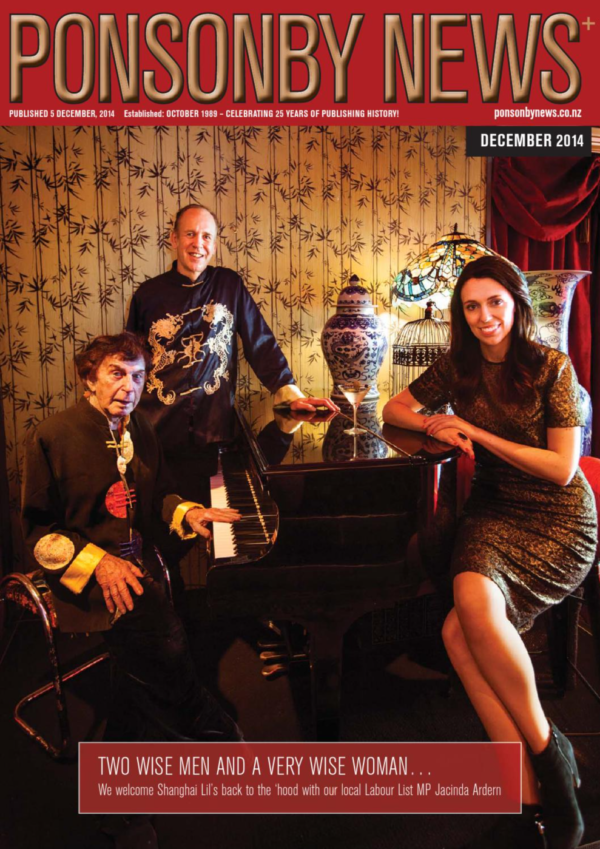Like their counterparts in suburbs around the country, the homes in Mount Maunpanui tend to follow accepted norms. That is, until you turn down the driveway of Glenn and Karen Keaney, where you find something rather less predictable: a home full of assertive, elbow-like angles that, from the outside, looks more like a scientific diagram than a traditional family home.
Auckland architect Daniel Marshall designed the four-bedroom, 300-square-metre home for Glenn and Karen and their three young sons, Loughlin (4), Leo (8) and Zachary (1). The building lies on a slightly elevated rear section (of 600square metres in size) and is composed of two structures connected by a staircase that links to four separate half-levels and an outdoor area sheltered from the wind from the Kaimai ranges by the lean of the house. The eastern half of the house includes the public spaces (garage, living area and kitchen), while the western half contains the private areas (bedrooms and bathrooms).
Originally, the Keaneys had put together a scrapbook of magazine pictures with a list of features they wanted, including a proper entryway and a "really workable" kitchen-dining area where the family could eat together and socialise. They didn't realise it at the time, but their scrapbook already contained a few images of Daniel Marshall houses, an architect known for his assertively contemporary approach to architecture. "We didn't notice who the architect was at first," says Karen. “But then this guy's name kept popping up. From the beginning, I had complete faith in Daniel's aesthetic. Everything I saw of his I really liked." A visit from a friend who mentioned Marshall was designing something for him cemented the connection and, says Glenn, “Two days later Daniel drove down to see us.”
Marshall arrived to find a tiny site, although the Keaneys had also bought the section behind them and changed the boundary line to gain a little extra space. ”But that meant some of it was at one height, and the rest was half a floor down," says Marshall. “We used that as a design generator to create a sort of zigzag house — it's almost a chevron-shaped plan. I was playing with a slight skew to make it sculptural, but because of its suburban context, we also wanted it to have an ‘other’ quality."
Aesthetically, the Keaneys favoured an industrial look with concrete floors and high ceilings, and enough wall area for a planned art collection. Both Glenn and Karen, who holds a degree in printmaking from Elam and is a graphic designer, share similar taste in art. So far their collection includes pieces from Martin Poppelwell, John Reynolds, Ngatai Taepa and Judy Millar, aswell as a large orange sculptural piece by local artist Laurie Steer in the entryway. The plan is for the collection to keep growing - and there are still plenty of walls left to fill.
The industrial feel the Keaneys wanted in the house does not mean the house is in any way cold or unwelcoming. Marshall's skewed plan is not just decorative, but twists the house to face the sun. The angled walls direct the view from the living room down towards the pool area, rather than out over suburbia, and lend the ‘public' rooms an airy, open quality. It was also designed with a family in mind, with a focus on creating a range of spaces for different purposes, such as the small, enclosed den filled with books that acts as a counterpoint to the open-plan living room with its lofty floor-to-ceiling windows. As the children grow up and become more independent, the division of public and private areas and the distinction between the den and dining and living spaces are becoming increasingly important, providing a range of options for different family members to partner in and retreat to, according to their moods. “Each space in this house has a particular use,’says Karen. “The den has become a real destination area for watching TV. It also means the kids aren't watching TV while they're eating.’
After a hassle-free construction carried out by Glenn's builder brother Mike, Keaney, the couple moved in “between Loughlin and Leo,’says Karen. “We didn't really know what having kids involved in terms of design. But that was good because we might have designed for babies rather than when they're five or six.“ Despite the old clichë about kids and stairs being a bad mix, the broad, flat stair that twist through the centre of the house have proved perfect. “With children, it's good to know that you only have to go down half a level,’ says Glenn.
Adds Karen: ”We've also never had to gate the stairs. There's such a beautiful gradation and they're so wide, you don't feel like you're walking upstairs as much as moving to a different space.






